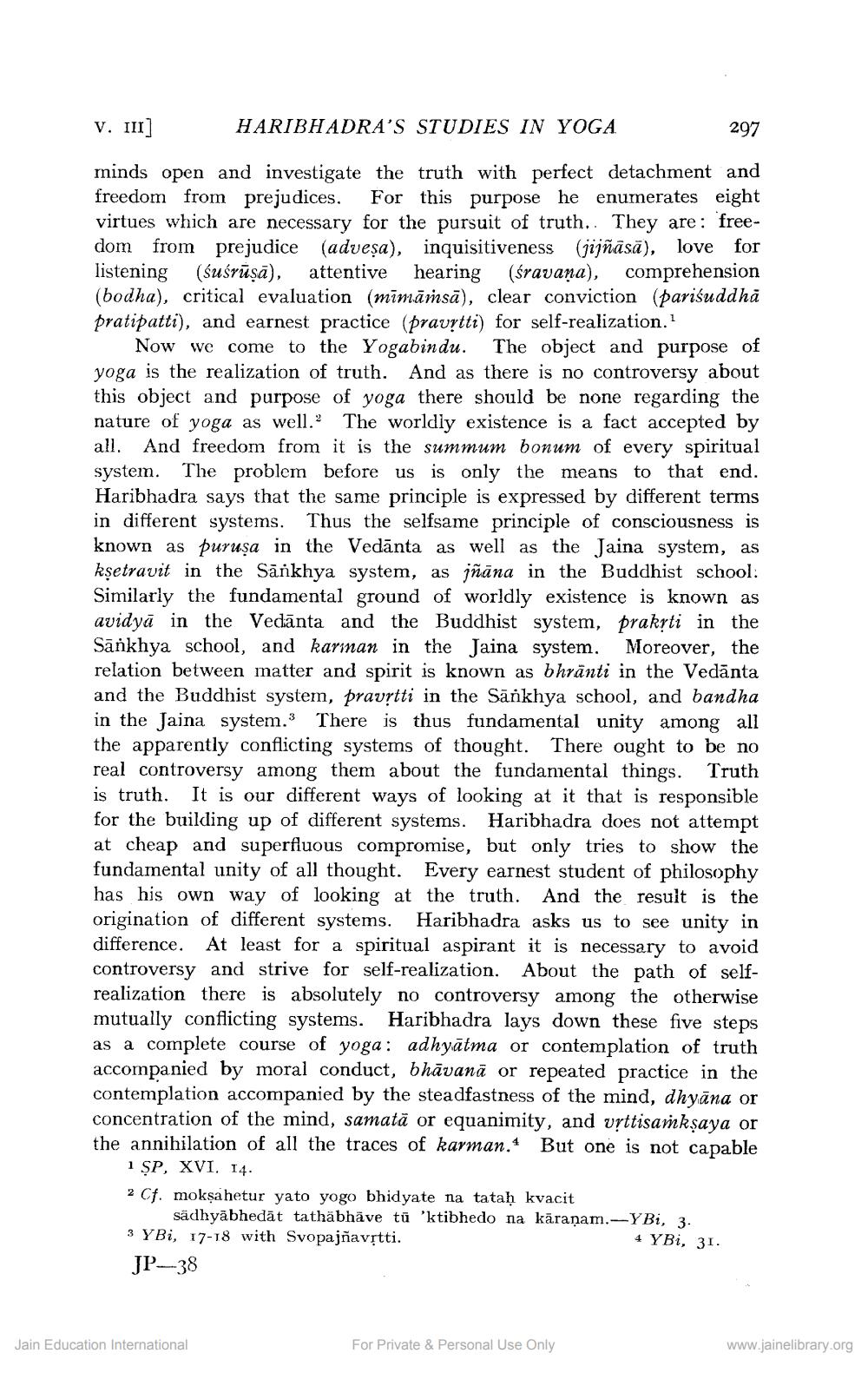________________
V. III]
minds open and investigate the truth with perfect detachment and freedom from prejudices. For this purpose he enumerates eight virtues which are necessary for the pursuit of truth. They are: freedom from prejudice (adveṣa), inquisitiveness (jijñāsā), love for listening (suśrūṣā), attentive hearing (śravana), comprehension (bodha), critical evaluation (mīmāṁsā), clear conviction (parisuddha pratipatti), and earnest practice (pravṛtti) for self-realization.1
of
Now we come to the Yogabindu. The object and purpose yoga is the realization of truth. And as there is no controversy about this object and purpose of yoga there should be none regarding the nature of yoga as well. The worldly existence is a fact accepted by all. And freedom from it is the summum bonum of every spiritual system. The problem before us is only the means to that end. Haribhadra says that the same principle is expressed by different terms in different systems. Thus the selfsame principle of consciousness is known as puruşa in the Vedanta as well as the Jaina system, as kṣetravit in the Sankhya system, as jñāna in the Buddhist school. Similarly the fundamental ground of worldly existence is known as avidya in the Vedanta and the Buddhist system, prakṛti in the Sankhya school, and karman in the Jaina system. Moreover, the relation between matter and spirit is known as bhränti in the Vedanta and the Buddhist system, pravṛtti in the Sankhya school, and bandha in the Jaina system. There is thus fundamental unity among all the apparently conflicting systems of thought. There ought to be no real controversy among them about the fundamental things. Truth is truth. It is our different ways of looking at it that is responsible for the building up of different systems. Haribhadra does not attempt at cheap and superfluous compromise, but only tries to show the fundamental unity of all thought. Every earnest student of philosophy has his own way of looking at the truth. And the result is the origination of different systems. Haribhadra asks us to see unity in difference. At least for a spiritual aspirant it is necessary to avoid controversy and strive for self-realization. About the path of selfrealization there is absolutely no controversy among the otherwise mutually conflicting systems. Haribhadra lays down these five steps as a complete course of yoga: adhyatma or contemplation of truth accompanied by moral conduct, bhavana or repeated practice in the contemplation accompanied by the steadfastness of the mind, dhyana or concentration of the mind, samată or equanimity, and vṛttisamkṣaya or the annihilation of all the traces of karman.4 But one is not capable
1 SP, XVI. 14.
2 Cf. mokṣahetur yato yogo bhidyate na tataḥ kvacit
sädhyābhedāt tathabhave tu 'ktibhedo na karanam.-YBi, 3. 3 YBi, 17-18 with Svopajñavṛtti.
4 YBi, 31.
JP-38
Jain Education International
HARIBHADRA'S STUDIES IN YOGA
For Private & Personal Use Only
297
www.jainelibrary.org




